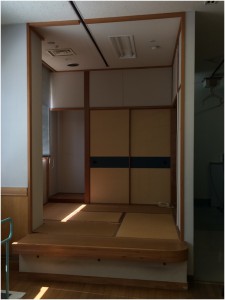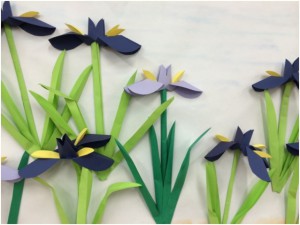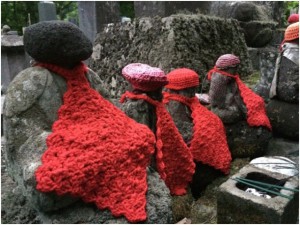Reflections on cultural occupations and cultural effectiveness
By Dr. Nancy Carlson Steadman
One of the things that I truly enjoy about the WFOT Congress is the traveling. It is fun to meet people from all over the world and to experience life in a different part of the globe. This summer, my husband Karl and I spent three weeks in Japan including a week in Yokohama, where the conference was held. After three weeks of traveling, visiting the Matsuzawa Hospital in Tokyo, living in Japan, and getting to know some Japanese people, I am challenged to reflect on my own cultural effectiveness.

The ADL space at the Matsuzawa Hospital in Tokyo: The flooring in this ADL space is tatami (畳) . In more traditional homes, this space would be used for a tea ceremony and sleeping. Before entering a space with tatami, you must remove your shoes. Typically, you take one large step up from the place where you remove your shoes to this folding flooring. In this type of room, the bedding mats are housed in the closet. They are brought into the room for sleeping.

An inspired Origami Art from the residents at the Matsuzawa Hospital in Tokyo: Folding paper into artful creations remains to be an historic, cultural heritage. I saw this in Hiroshima with the story of Sadako Sasaki, who believed that folding 1000 paper cranes would make her well as she contracted after she survived the deployment of the atom bomb. I also saw this in contemporary society. The OT who organized our tour of a Japanese mental health facility made all of the visiting OTs a paper crane gift as a memento of our experience.

Sacred sculptures with knitted bibs and hats: In my travels, I noticed red peppered shrines, temples and sculptures. This photo made me smile because of our connection with knitting as a handicraft. These sculptures guarded the graves in a small town called Nikko, just north of Tokyo. Since the 1970s, it has been a custom for women to knit these caps and bibs. You can learn more about this custom and its spirituality at www.japantimes.co.jp/community/2012/03/31/our-lives/a-guide-to-jizo-guardian-of-travelers-and-the-weak/#.U71JAfldXg8.
How is your practice influenced by your local culture? What are the values, beliefs, traditions, and customs that are important to your patients/consumers/clients?